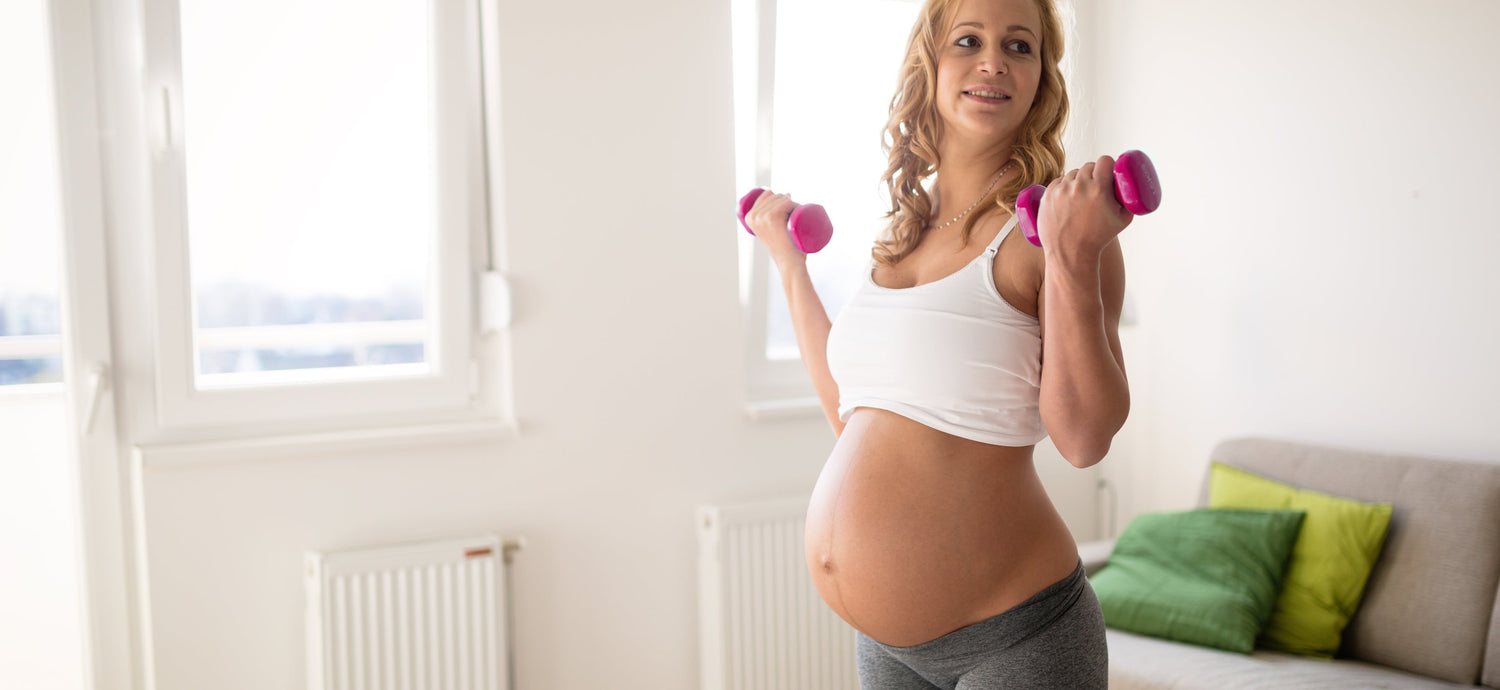 We are excited to share this guest blog by Kath Baquie from FitNest Mama. Kath is a mum of three young girls, physiotherapist in women’s health, and founder of FitNest Mama – a roadmap to help you prepare, recover and take on the new life chapter at your own pace. FitNest Mama helps you with all the essentials for the confident pregnancy and after-birth experience that you deserve.
We are excited to share this guest blog by Kath Baquie from FitNest Mama. Kath is a mum of three young girls, physiotherapist in women’s health, and founder of FitNest Mama – a roadmap to help you prepare, recover and take on the new life chapter at your own pace. FitNest Mama helps you with all the essentials for the confident pregnancy and after-birth experience that you deserve.
Growing and birthing a bub can be beautiful and overwhelming. Your body is changing. There may be new aches and pains. Perhaps you’re Googling everything, from strange symptoms to pregnancy-safe exercise. You want to exercise for pregnancy in the best – and safest – way possible.
After having grown and birthed 3 babies, I totally understand the challenges that can sometimes be faced with exercising during pregnancy. The tiredness, morning sickness, back & pelvic pain, wrist pain, and the list goes on!
As a mum of 3, a perinatal physiotherapist, and founder of FitNest Mama, a membership helping mamas have a healthy pregnancy and strong recovery, I am just so passionate about empowering women to help them have a wonderful pregnancy journey and after birth recovery.
Here are my 5 top tips for exercising during pregnancy that every pregnant mama needs to read.
Medical clearance
Okay okay I know this sounds super simple and straight forward, but it is a really important one to tick off.
As recommended by RANZCOG (Royal Australian & New Zealand College of Obstetricians and Gynaecologist), "assessment of medical and obstetric risks should be undertaken to identify potential contraindications to exercise for the pregnant woman prior to commencing an exercise program".
So ladies, in simple terms, at your next appointment with your doctor, midwife or other health professional, be sure to ask "is it ok for me to exercise?"
And then you can tick of this simple (but important) task off your list.
P.S. RANZCOG has a great website here with some valuable patient information guides that you might be interested in checking out.
Avoid Heavy Lifting
Weight training and resistance training is important for women for many different reasons, however really heavy weight training during pregnancy may not be in your best interest, if you want to protect your pelvic floor muscles.
As a general rule of thumb, I recommend pregnant women don't lift weights that require her to hold her breath, grunt, or bear downwards, which can all put extra pressure through the pelvic floor area.
This may require slightly lighter weights and perhaps more reps, however it will help to protect those pelvic floor muscles that are already under extra load.
What about toddlers?!
There are times when picking up a toddler is inevitable... whether or not it's because they're upset, or are tired, or for a million other reasons. However it may be worthwhile trying to reduce how often you're lifting up your toddler.
My tips:
- No lifting doesn't mean no cuddles. Perhaps you could sit on the couch to cuddle?
- Perhaps you could get some lightweight steps to use around the house so your toddler can practice getting in the bath themselves (with supervision of course), or in/out of the cot/bed etc....
- And the last tip would be try to brainstorm this with your partner / other caregiver, as you don't want one person 'playing favourites'. So if you could bothreduce how much lifting is needed, it might be a bit better received by your toddler...
Trust me, as your pregnancy progresses, your body will thank you for it. And it is also great to get into these habits during pregnancy before there is a newborn in the house. After childbirth, whether or not you have a caesarean or a vaginal delivery, it is great to try and limit how much lifting you’re doing in those first 6 weeks, and avoiding lifting a heavy toddler in those first 6 weeks is definitely recommended… so let’s start getting into the habit now during pregnancy!
Adapt High Impact Exercises such as Running
Running during pregnancy is a little contentious... some people say it is totally fine to run during pregnancy, other's say to stop it, full stop.
My take? Well here are some facts based on recent research...
- Running has been deemed safe during pregnancy, however this research mostly takes into account the cardiovascular effects on the body (providing you're running at a safe intensity). Most research hasn't investigated the effect of pelvic health whilst running.
- Running is deemed a high impact exercise, as it known to be associated with greater ground reaction forces. Put simply, if you think about your pelvic floor muscles as a trampoline, and then think of a bunch of kids jumping on the trampoline, this is kinda what happens when all your organs are bouncing up and down on your pelvic floor... this is thought to cause two potential issues:
- Pelvic floor weakness and/or
- Pelvic floor overactivity.
There has also been a small study suggesting that runners are more likely to require forceps (an instrumental delivery). Granted, research into this area is limited currently.
So, my recommendations are:
- Pregnancy is not a time to take up running for the first time if you've never been a runner.
- If you're happy not to run, substitute it to a different exercise that is low impact (walking up hill, swimming, FitNest Workouts etc).
- If you DO want to keep running, you could try taking shorter steps (this reduces the load on the pelvic floor), avoid running DOWN hills (running down hill is thought to create more forces through the pelvic floor), and/or try running for a shorter duration.
If you ARE wanting to run during pregnancy, I would also advise you to chat to your doctor, and also see a pelvic floor physio for a specialised pelvic floor program (which may include both strengthening and relaxation components).
Be careful what type of ‘core exercises’ you do
It is fantastic to work the core muscles during pregnancy, but sit ups and planks just aren't necessarily the right way to do it.
During pregnancy, your abdominal muscles, and the ligament (linea alba) that sits in between your rectus abdominis (aka "6 Pack Muscles") become stretched, due to the growing size of your belly. This can cause what is known as a diastasis recti (abdominal muscle separation).
During pregnancy, we want to try to avoid putting extra pressure or tension on this ligament, and we want to try to reduce/manage the amount of diastasis where possible. Sit ups and planks will generally only put extra pressure through this area. After child birth, it is ideal to have a step-by-step rehab plan to gradually return to abdominal work such as sit ups and planks.
If you want to find out more about diastasis recti and pelvic floor muscles during pregnancy, check out my free pregnancy physio class.
Learn how to confidently lift your pelvic floor muscles, relax your pelvic floor muscles.... and then start strengthening them!!
Ah yes the pelvic floor… although last on the least, it is super important to become familiar with your pelvic floor during pregnancy.
So, the first step is to confidently know that you can lift your pelvic floor muscles, and confidently let them relax, and, as I like to say, 'drop & flop'.
My top tips:
- Start with first relaxing your pelvic floor muscles. Get in a comfortable position (try sitting with your elbows on your knees), and let your tummy hang out (drop & flop), and then feel your pelvic floor muscles relax/release (drop & flop).
- Try taking a few deep belly breaths to help with the relaxation
- Don't feel like you're straining/pushing down, it should feel more like a release.
Then, once you are happy everything is nice and relaxed, try a gentle pelvic floor lift, focusing on quality and not quantity.
Some cues for a pelvic floor lift:
- Pretend you’re stopping yourself from passing wind.
- Imagine you’re sucking up a pee through your vagina
- Imagine you’re sucking up a thickshake with a straw (I know this is a super gross thought sorry).
Need more tips? Come along to my free Pregnancy Physio Class, where we talk all things pelvic floor and abdominal muscle separation during pregnancy, and how to confidently recover after childbirth, so that you can get back to doing all the things you love. Free Pregnancy Physio Class
References:
Benjamin et al (2014) Effect of exercise on the diastasis of the rectus abdominis muscle in the antenatal and postnatal periods: a systematic review. Physiotherapy 100: 1-8.
Karmarka and Dwyer (2018) High impact exercise may cause pelvic floor dysfunction. BJOG Debate.
Kuhrt et al (2018) Is recreational running associated with earlier delivery and lower birth weight in women who continue to run during pregnancy? An international retrospective cohort study of running habits of 1293 female runners during pregnancy. BMJ Open Sport Exerc Med 4(1).
Van Geelen et al (2018) A review of the impact of pregnancy and childbirth on pelvic floor function as assessed by objective measurement techniques. Int Urogynecol J 29(3):327-338.






Leave a comment
All comments are moderated before being published.
This site is protected by hCaptcha and the hCaptcha Privacy Policy and Terms of Service apply.